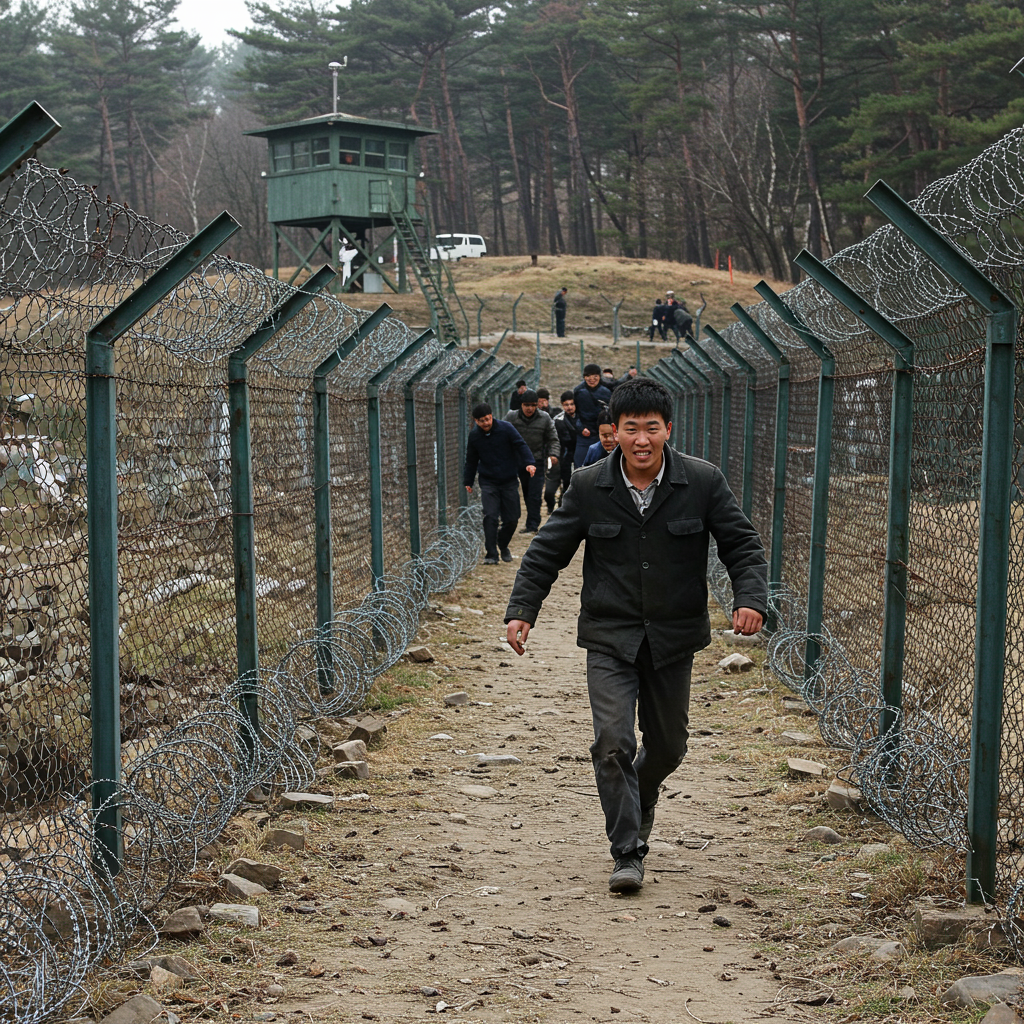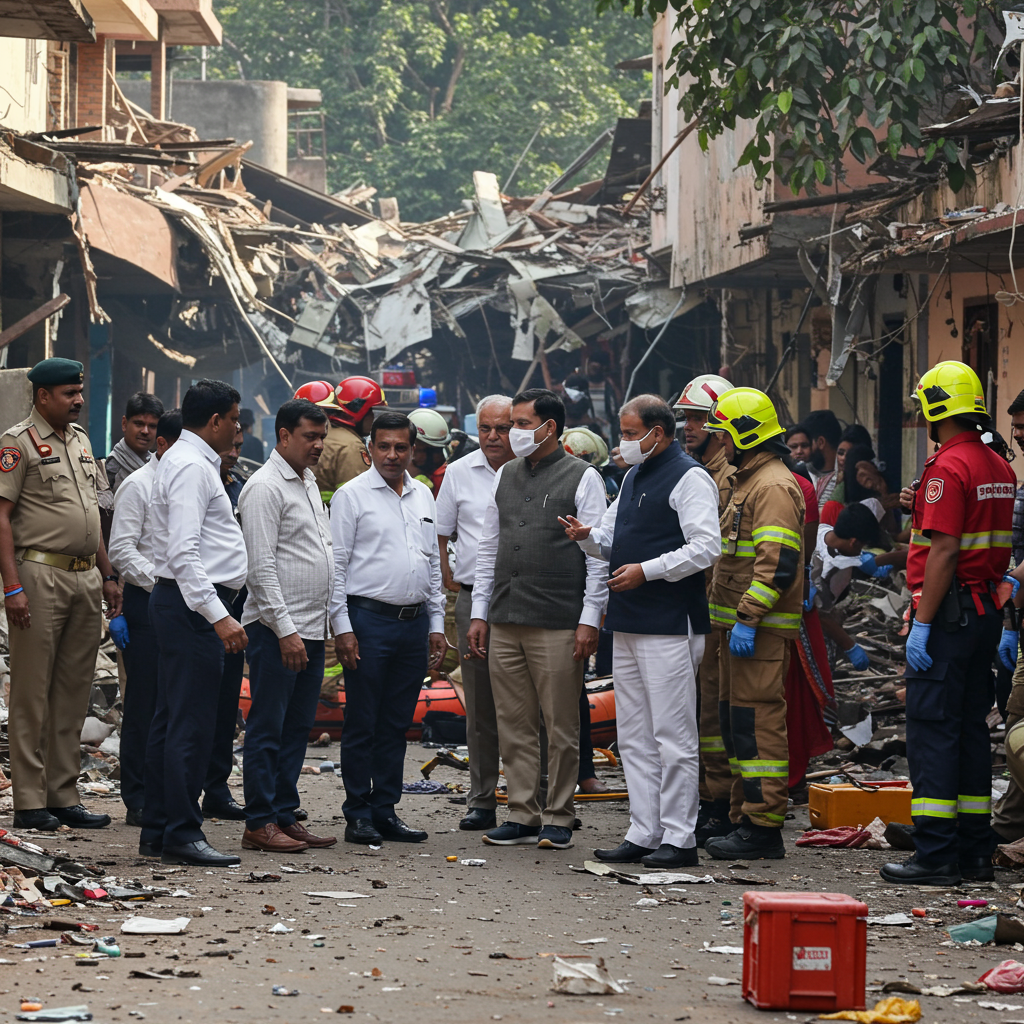A north korean civilian has successfully crossed the heavily fortified Demilitarized Zone (DMZ) into south Korea, marking an exceptionally rare instance of direct land defection across one of the world’s most dangerous borders. South Korean military officials confirmed securing the individual after a complex, roughly 20-hour operation near the central-west section of the border. This audacious crossing highlights the extreme risks involved in escaping the North and offers a stark contrast to the far more common, albeit still perilous, indirect routes defectors typically undertake through third countries. The incident underscores the persistent tension and formidable security apparatus guarding the volatile inter-Korean frontier.
The Perilous Journey Across the Forbidden Zone
South Korea’s Joint Chiefs of Staff (JCS) reported detecting the North Korean individual with surveillance equipment early on Thursday morning, between 3 and 4 a.m. local time. The initial detection occurred near a shallow stream located inside the southern portion of the DMZ. This vast, heavily mined buffer zone presents a significant challenge for any unauthorized crossing.
The individual reportedly remained largely motionless during daylight hours, attempting to avoid detection. Thick forest and dense vegetation within the DMZ at times made tracking difficult for the South Korean military. Surveillance teams maintained continuous monitoring of the person’s movements throughout the day.
Securing a Rare DMZ Crosser
As night fell, South Korean troops began their approach towards the detected individual. They successfully made contact near the Military Demarcation Line (MDL), which serves as the de facto border running through the heart of the DMZ. This area is notoriously dangerous due to hidden landmines and constant observation from both sides.
Upon encountering the soldiers, the North Korean man reportedly asked, “Who are you?” The South Korean troops identified themselves clearly. “We are the South Korean military. We’ll guide you to safety,” they replied, offering immediate assistance.
Following this crucial exchange, the individual voluntarily crossed the MDL and joined the South Korean soldiers. The military then initiated a “standard guiding operation.” This complex maneuver involved a significant number of troops navigating the treacherous terrain, dense brush, and hidden landmine fields to escort the defector safely south and out of the Demilitarized Zone. The entire operation, from the initial detection to the successful securing of custody, spanned approximately 20 hours.
Inside the DMZ: A Formidable Barrier
The Demilitarized Zone is not a neutral or empty space; it is a 248-kilometer (155-mile) long and 4-kilometer (2.5-mile) wide strip of land serving as the heavily fortified border between North and South Korea. Since the Korean War ended with an armistice in 1953, not a peace treaty, the two nations technically remain in a state of war, making the DMZ one of the most tense borders on Earth.
This formidable buffer zone is packed with extensive layers of defense. These include millions of landmines, anti-tank traps, formidable barbed-wire fences, and constant surveillance technology. Both sides also maintain a heavy presence of combat troops positioned to deter any attempted crossing. Successfully traversing this mine-strewn and closely watched territory requires immense luck and presents life-threatening risks at every step.
Escape Routes: The Perilous Alternatives
Direct land crossings through the DMZ like this incident are exceedingly rare precisely because of these overwhelming defenses. While tens of thousands of North Koreans have sought refuge in the South since the Korean War – official data indicates over 34,000 have arrived – the vast majority do so via a completely different path. The typical defector route involves crossing the northern border into China, often over the Yalu or Tumen rivers.
This indirect route through China, however, carries its own severe dangers. North Koreans face the constant threat of being apprehended by Chinese authorities. If caught, they are often repatriated to the North, where they face harsh punishment, imprisonment, or even death. To avoid this fate, defectors typically travel through China to a third country, such as Thailand, before ultimately reaching South Korea. This lengthy and arduous journey can take months or even years and involves navigating multiple borders and relying on underground networks.
Recent data from South Korea’s Unification Ministry shows that while overall arrivals in the South decreased significantly after North Korea sealed its borders in 2020 due to the COVID-19 pandemic, they have begun to rise again. 2024 saw 236 arrivals, a 20% increase compared to 2023, indicating a slow return to pre-pandemic defection levels despite continued border security measures, including reported “shoot-on-sight” orders along the China border.
Context and Ongoing Scrutiny
This rare direct crossing incident unfolds amidst a period of heightened tension along the inter-Korean border. Recent provocations, such as North Korea sending thousands of trash-filled balloons into the South, have escalated hostilities. At the same time, the incident occurs in the context of recent efforts reported from Seoul aimed at lowering cross-border tensions, including the cessation of propaganda loudspeaker broadcasts along the DMZ, a move intended to foster a more conciliatory atmosphere.
The individual is now in custody with South Korean authorities. Relevant law enforcement and intelligence agencies are conducting investigations to determine his identity, background, and the precise motives behind his incredibly risky decision to cross the DMZ directly. Speculation from defector-turned-researchers suggests the individual could potentially be a farmer who worked near the border area. Some analysts also ponder whether the temporary halt in loudspeaker broadcasts might have played a role in his timing or decision-making, alongside the cover potentially provided by dense summer vegetation for such a bold, high-risk escape.
South Korean military officials confirmed that they detected no unusual movements or activity from the North Korean military in connection with the crossing. The successful guiding operation by the South Korean troops highlights their vigilance and capability in securing individuals who manage to breach the North’s side of the heavily guarded frontier and reach the MDL. The incident serves as a potent reminder of the ongoing human desire for freedom that drives individuals to attempt escape, even across the planet’s most dangerous divide.
Frequently Asked Questions
How did the North Korean defector manage to cross the DMZ initially without immediate detection?
Crossing the Demilitarized Zone (DMZ) is extremely challenging due to dense fortifications and constant surveillance. The North Korean individual was first detected by South Korean military surveillance equipment early in the morning. Reports indicate he deliberately stayed still during daylight hours, using the thick forest and dense vegetation within the DMZ for concealment. While detection occurred relatively quickly, the difficult terrain and the defector’s efforts to remain hidden made tracking and securing him a prolonged 20-hour operation for the South Korean military.
What are the typical routes North Koreans use to escape to South Korea instead of crossing the DMZ?
Directly crossing the DMZ is exceedingly rare due to its extreme dangers, including millions of landmines, tank traps, barbed wire, and intense surveillance. Most North Koreans attempting to defect to the South take an indirect and longer route. This typically involves crossing the northern border into China, often via rivers like the Yalu or Tumen. From China, defectors travel through a third country, such as Thailand, to avoid forced repatriation by Chinese authorities, before ultimately reaching South Korea. This journey is still fraught with peril but avoids the immediate, overwhelming fortifications of the DMZ.
Why are direct crossings across the Demilitarized Zone (DMZ) considered so rare and dangerous?
Direct land crossings across the DMZ are considered one of the most dangerous defection methods possible. The DMZ is a 4-kilometer-wide strip stretching across the Korean peninsula, heavily fortified with an estimated million-plus landmines, extensive barbed wire, tank traps, and multiple layers of military patrols and surveillance technology on both sides. The dense vegetation also adds complexity but doesn’t negate the overwhelming risks posed by constant monitoring and hazardous obstacles. The success rate for direct crossings is incredibly low compared to the alternative routes through China and Southeast Asia.
This rare event underscores the persistent dangers and complexities of the inter-Korean border. Investigations into the defector’s identity and motivations will continue, providing further insight into the human stories behind escapes from North Korea and the intricate security dynamics of the Korean Peninsula.




